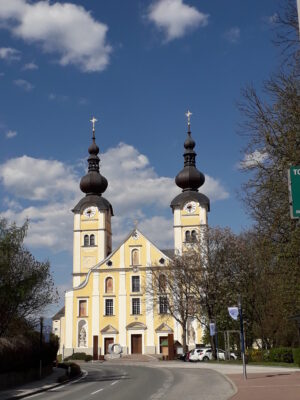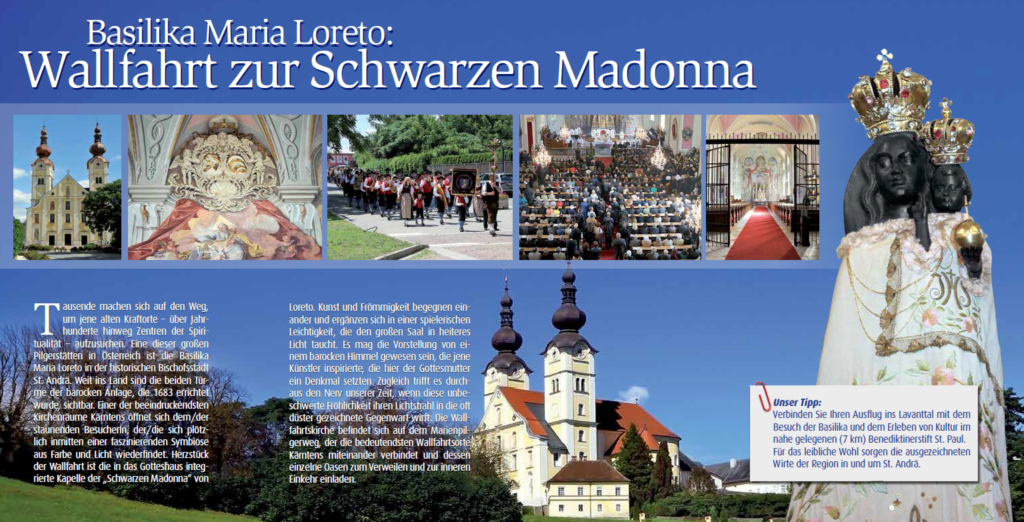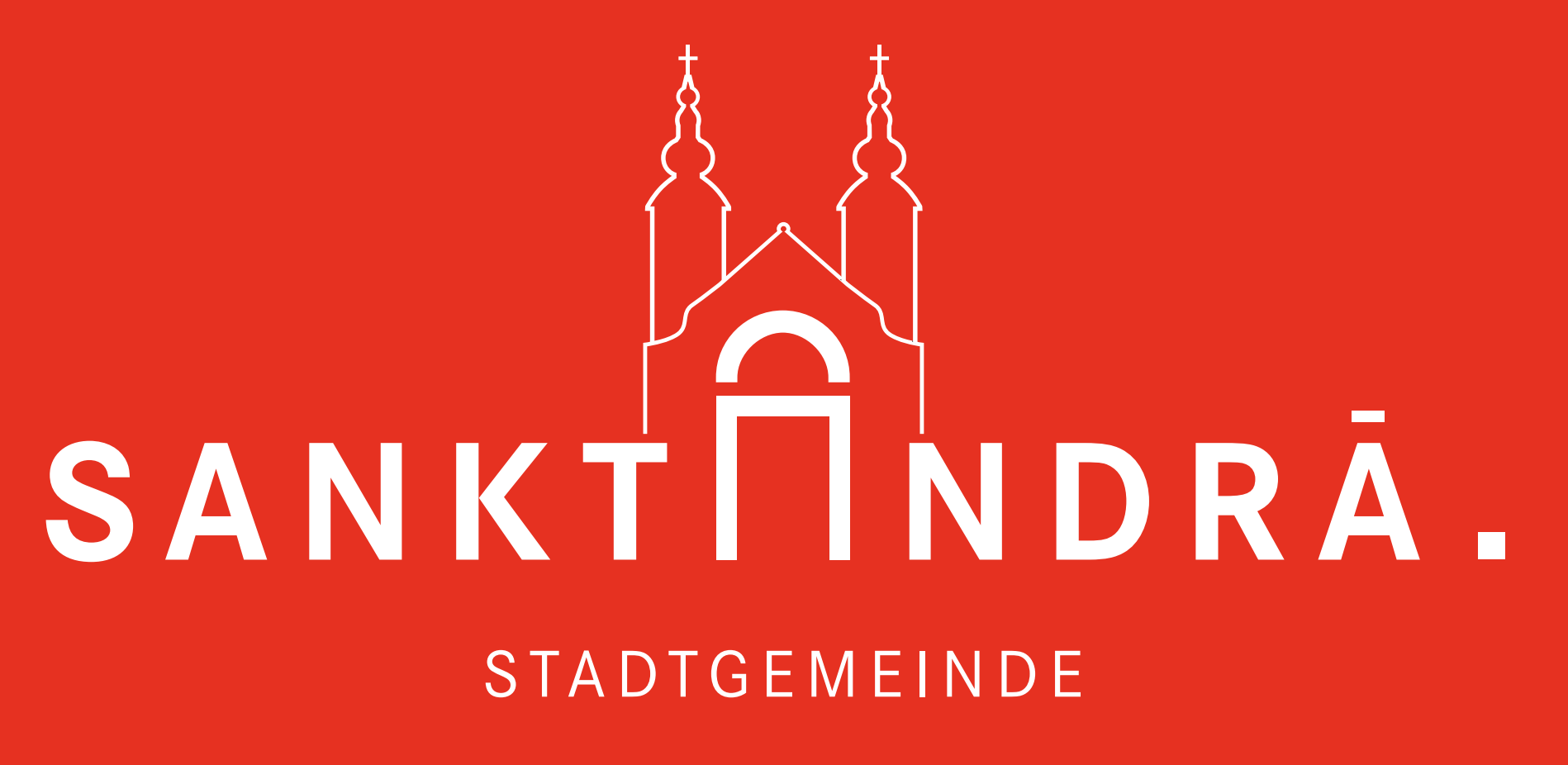Wir sind Basilika!

.
Since July 21, 2014, the pilgrimage church Maria Loreto can consider itself fortunate to be the second 'Basilica minor' in Carinthia, alongside Maria Luggau. The imposing Baroque structure makes a strong impression outwardly, and not least, its eventful history and the pilgrim flow of past centuries have earned the church this special papal distinction.

At the beginning, it was a simple idea. Prince-Bishop Albert von Priamis, who held the reins in St. Andrä in the mid-17th century, recognized the significance and emerging trend of pilgrimage. During a trip to Italy, he came across the famous Marian sanctuary in Loreto, on a hill near Ancona in central Italy. With grand plans for St. Andrä, the bishop returned to his hometown. He wanted to commission a replica of the famous 'Black Madonna' seen there to attract many believers to St. Andrä. And so it happened. On December 8, 1647, a direct replica of the Lauretan miraculous image and the chapel erected above it were solemnly consecrated. The participation of the population was enormous, and the anticipated influx of pilgrims began. Priamis aimed to use the donations from the faithful to build a magnificent church above the chapel.
But the money was far from sufficient. In 1654, the already seriously ill bishop passed away. His grand project remained buried under the unbearable financial burden for years until 1673 when Prince-Bishop Franz Caspar von Stadion ascended the episcopal throne in St. Andrä. He hailed from a well-off noble family and could thus provide the financial means for the construction. Due to the greater expertise and experience in Northern Italy, the cosmopolitan bishop entrusted a primary builder from Aquileia named Juri with the management of the grand project. In 1683, the starting signal was given for the construction of the sacred building, designed entirely in the style of Italian Baroque. Four years later, the construction work was completed, with only the interior furnishings and the two towers remaining. While the interior furnishings were gradually added, the two onion-domed towers with their twin windows and Renaissance-style square ornaments were added in 1730. Rising 60 meters into the air, they were entirely re-covered with copper in a comprehensive restoration from 2010 to 2012.
As you enter the vibrant church, the cheerful colors and the spaciousness of the church immediately catch your eye. On the one hand, we owe this to Prince-Bishop Ernst Gandolf von Kuenburg, who in 1793 had the Gnadenkapelle dismantled and relocated it to the left of the entrance. This achieved an incredibly impressive spatial effect in the 40 meters long and 17 meters high church. On the other hand, the diversity of colors and the purity and excellence of the art treasures can be attributed to the two-year interior restoration of the Basilica, completed in 2014, where the original splendor from the Baroque period could be restored. 'The church itself is built in the purest and most beautiful Italian style, and surpasses in beauty of construction all the churches in Carinthia that I know.' – This was the judgment of art historian Karlmann Tangl about the Loreto Church. In it, styles from various epochs come together, offering a journey through European culture.
Centrally located in the presbytery, the Crucifixion group by the Klagenfurt master Claus conveys the delicacy and stylistic confidence of Austrian High Baroque. Behind it unfolds the extensive architectural fresco, where elements of Classicism mix with those of the late Baroque era. Everything is based on the idea of the sacrifice of Christ on the cross. So, when the Trinity spreads the mantle of mercy over the scene from above, and on the right and left, the prophets Jeremiah and Isaiah announce the sacrificial death of Christ, we have here Baroque illusion painting at its finest. The intention was to deceive the viewer, simulate more spatial impact, and even create three-dimensional worlds. In addition to an episcopal throne showcasing the skill of Viennese embroidery art from the 1760s, or a special Augsburg reverse glass painting in the form of a reproduction of the Marian icon from Santa Maria Maggiore in Rome, there is also a masterpiece by the gifted artist Jakob Zanussi in the Basilica depicting the Annunciation. The subtle brushstroke and the skillful play of light and shadow give the painting the touch of great European paintings of the 18th century.
Because of its beauty, its wealth of art treasures of all kinds, and its special atmosphere, thousands have visited the now Basilica in the past. Many have found refuge in the Black Madonna, while others have admired the encounter of artistic styles.
A new era has dawned with the elevation to Basilica in St. Andrä. This church is worth seeing, and rich is its history. It cannot be described; it must be experienced.
Municipality St. Andrä
Lavanttal / Carinthia / Austria
St. Andrä 100
9433 St. Andrä
Tel: +43 (4358) 27 10 / 40
Fax: 43 (4358) 27 10 / 49
E-Mail: mailto:kultur@st-andrae.at

